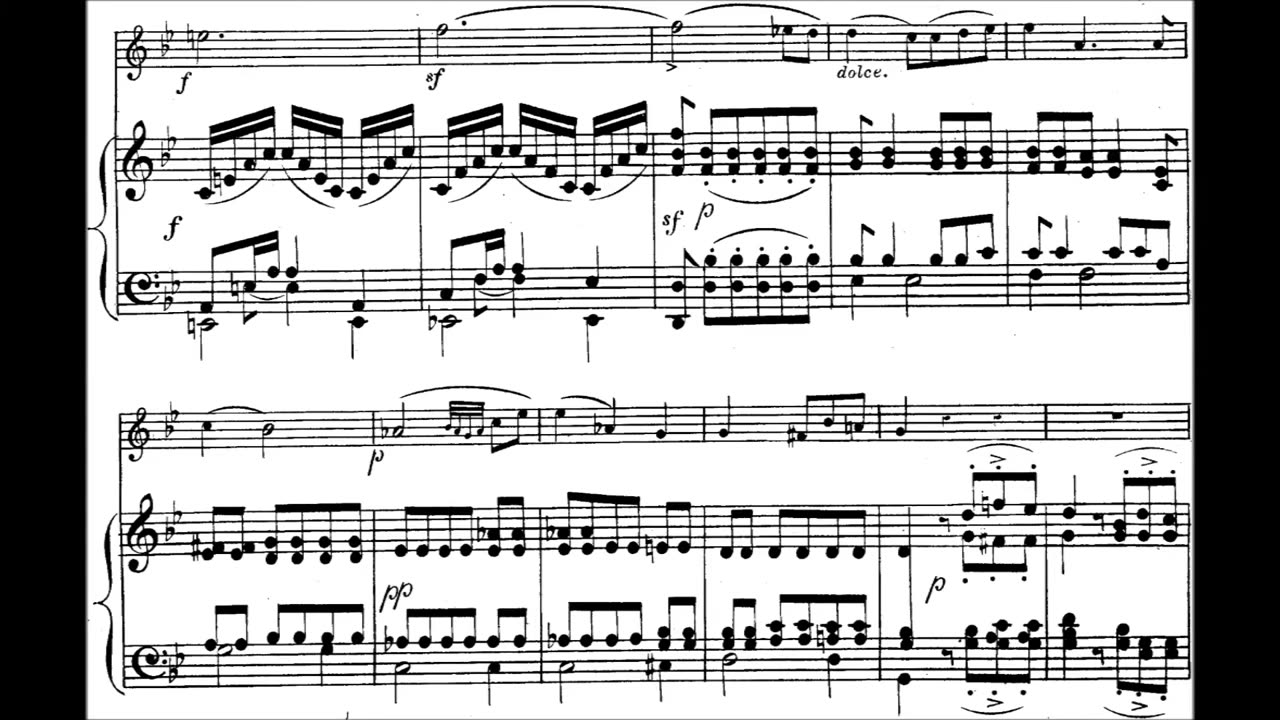Premium Only Content

Walmisley – Oboe Sonatina No. 1
Oboe: The main instrument of interest.
Instrumental Music: Music composed and performed without vocals or singing.
Woodwind: Oboe belongs to the woodwind family of instruments.
Double Reed: Oboe has a double reed mechanism for producing sound.
Solo: Oboe is often used as a solo instrument in compositions.
Chamber Music: Oboe is frequently featured in chamber music ensembles.
Orchestra: Oboe is an integral part of the orchestra, often found in the woodwind section.
Concerto: A musical composition featuring the oboe as the solo instrument, accompanied by an orchestra.
Etude: A musical piece designed to improve specific technical aspects of oboe playing.
Articulation: The way notes are started, sustained, and ended on the oboe.
Tone Color: Oboe's unique timbre and ability to produce different colors in its sound.
Embouchure: The way a player's mouth and lips interact with the oboe's reed and mouthpiece.
Breathing Technique: Proper breath control is essential for oboists to produce consistent sound.
Vibrato: A technique where the pitch of a note oscillates slightly to add expressiveness.
Trill: Rapid alternation between two adjacent notes.
Orchestration: The arrangement of musical parts for different instruments in an ensemble or orchestra.
Reed-Making: Crafting and adjusting oboe reeds for optimal sound production.
Melody: Oboe often carries the main melody in compositions.
Harmony: Oboe's role in supporting harmonies and chords within a piece.
Expressiveness: Oboe's ability to convey emotions and feelings through its sound.
Phrasing: Shaping musical lines by grouping notes into meaningful phrases.
Dynamics: Variations in loudness and intensity in the oboe's sound.
Concert Pitch: Oboe is a transposing instrument, sounding a different pitch than written.
Crescendo: Gradually increasing the volume of the sound.
Decrescendo: Gradually decreasing the volume of the sound.
Legato: Smooth and connected playing of notes.
Staccato: Short and detached playing of notes.
Soloist: The oboe player performing a solo part in a composition.
Composer Names: Mention of composers known for writing significant oboe pieces, like Mozart, Strauss, and Vaughan Williams.
Repertoire: The collection of music pieces available for oboe performance.
These keywords should provide you with a solid foundation to explore various aspects of oboe instrumental music.
-
 2:09:47
2:09:47
Nerdrotic
6 hours ago $3.73 earnedHollywood's Long Dark Summer of the Soul - Nerdrotic Nooner 511
37.9K1 -
 1:36:05
1:36:05
Side Scrollers Podcast
4 hours agoStreamer ATTACKS Men Then Cries Victim + Pronoun Rant Anniversary + More | Side Scrollers
17K -
 12:06
12:06
Liberty Hangout
1 day agoDemocrat Woman Can't Define 'Woman'
33.2K70 -
 LIVE
LIVE
GritsGG
7 hours agoRumble Customs! 3515 Ws! 🫡!
329 watching -
 38:39
38:39
Grant Stinchfield
4 hours ago $1.39 earnedHow Local TV News LOST Its Soul
18.4K3 -
 2:09:51
2:09:51
Badlands Media
15 hours agoBadlands Daily: Sept. 1, 2025 – Trump vs. Big Pharma, Giuliani Crash, and Mortgage Fraud Fallout
59.1K37 -
 1:12:35
1:12:35
theoriginalmarkz
5 hours agoCoffee with MarkZ. 09/01/2025
51.9K14 -
 2:59:48
2:59:48
Wendy Bell Radio
10 hours agoSunday, Bloody Sunday
135K264 -
 1:10:02
1:10:02
crgoodw1n
4 hours agoHAPPY LABOR DAY! Tactical shoosting W/ @BenderOdoyle Ask about !12hr !freshenup !discord
18.9K2 -
 LIVE
LIVE
ENEMYOFDEATH2012
16 hours agoGod of War Playthrough Pt. 2 and some Fortnite
34 watching